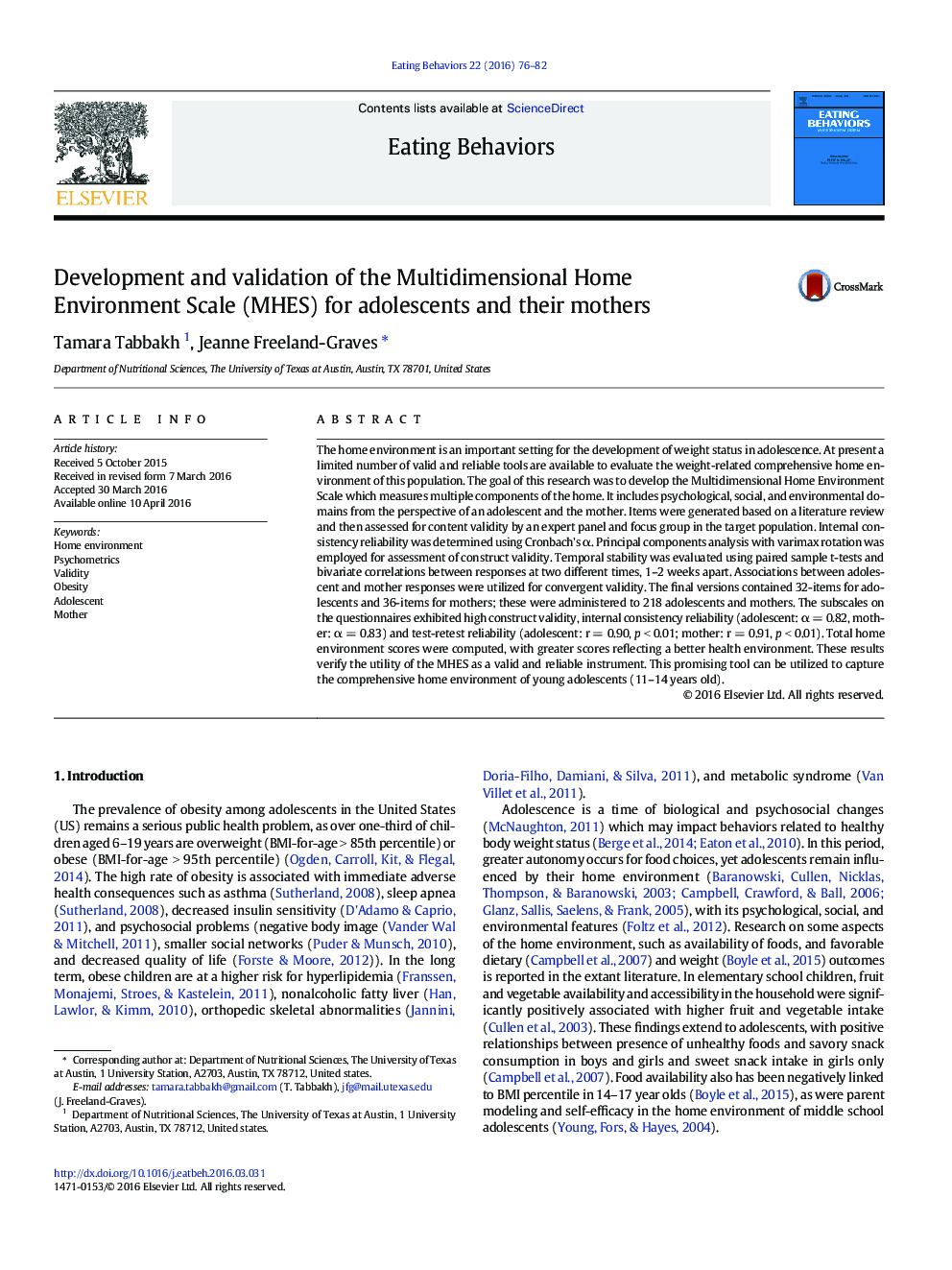| Article ID | Journal | Published Year | Pages | File Type |
|---|---|---|---|---|
| 906193 | Eating Behaviors | 2016 | 7 Pages |
•Psychological, social, and environmental factors in the home were assessed.•The MHES displayed content validity for evaluation of the comprehensive home environment.•The MHES is internally consistent (adolescents: α = 0.82, mothers: α = 0.83).•Test–retest reliability of the scale was high (adolescent: r = 0.90, mother: r = 0.91).•This scale is a valid tool to evaluate home environment factors that impact obesity in adolescence.
The home environment is an important setting for the development of weight status in adolescence. At present a limited number of valid and reliable tools are available to evaluate the weight-related comprehensive home environment of this population. The goal of this research was to develop the Multidimensional Home Environment Scale which measures multiple components of the home. It includes psychological, social, and environmental domains from the perspective of an adolescent and the mother. Items were generated based on a literature review and then assessed for content validity by an expert panel and focus group in the target population. Internal consistency reliability was determined using Cronbach's α. Principal components analysis with varimax rotation was employed for assessment of construct validity. Temporal stability was evaluated using paired sample t-tests and bivariate correlations between responses at two different times, 1–2 weeks apart. Associations between adolescent and mother responses were utilized for convergent validity. The final versions contained 32-items for adolescents and 36-items for mothers; these were administered to 218 adolescents and mothers. The subscales on the questionnaires exhibited high construct validity, internal consistency reliability (adolescent: α = 0.82, mother: α = 0.83) and test-retest reliability (adolescent: r = 0.90, p < 0.01; mother: r = 0.91, p < 0.01). Total home environment scores were computed, with greater scores reflecting a better health environment. These results verify the utility of the MHES as a valid and reliable instrument. This promising tool can be utilized to capture the comprehensive home environment of young adolescents (11–14 years old).
